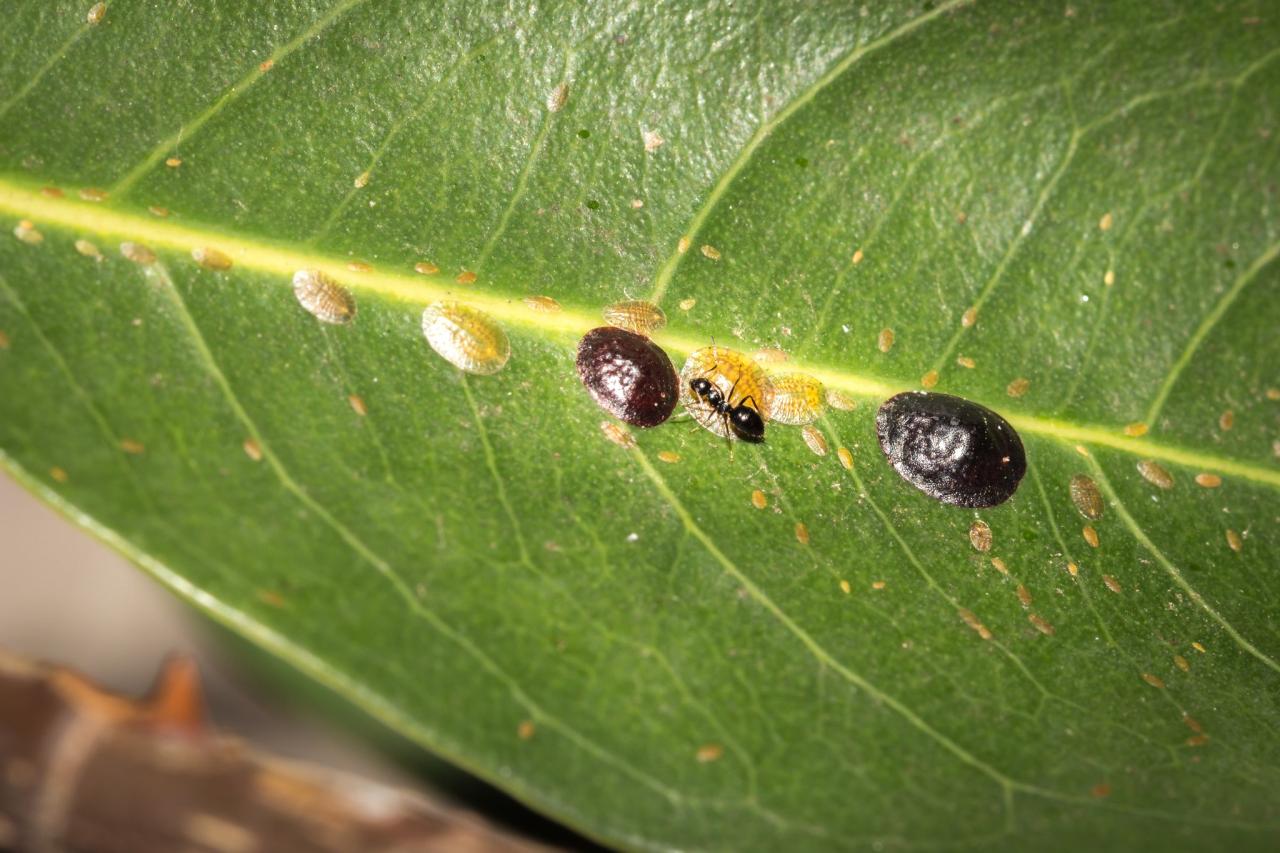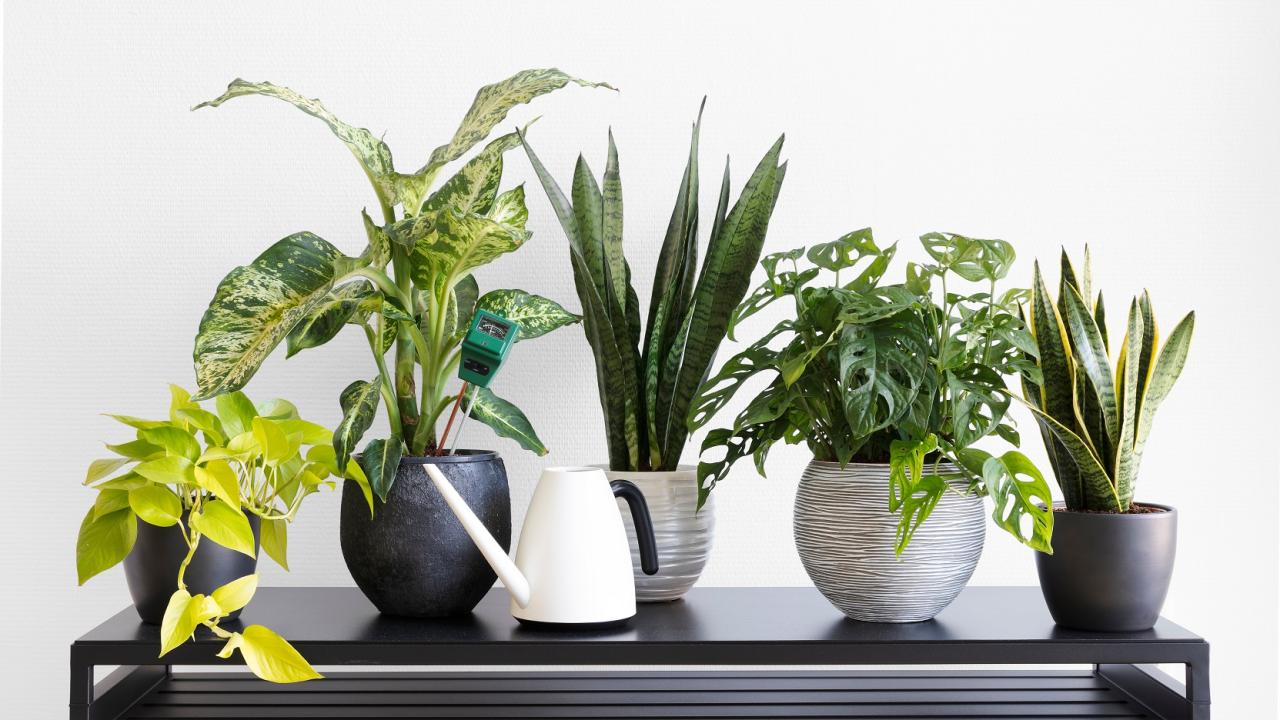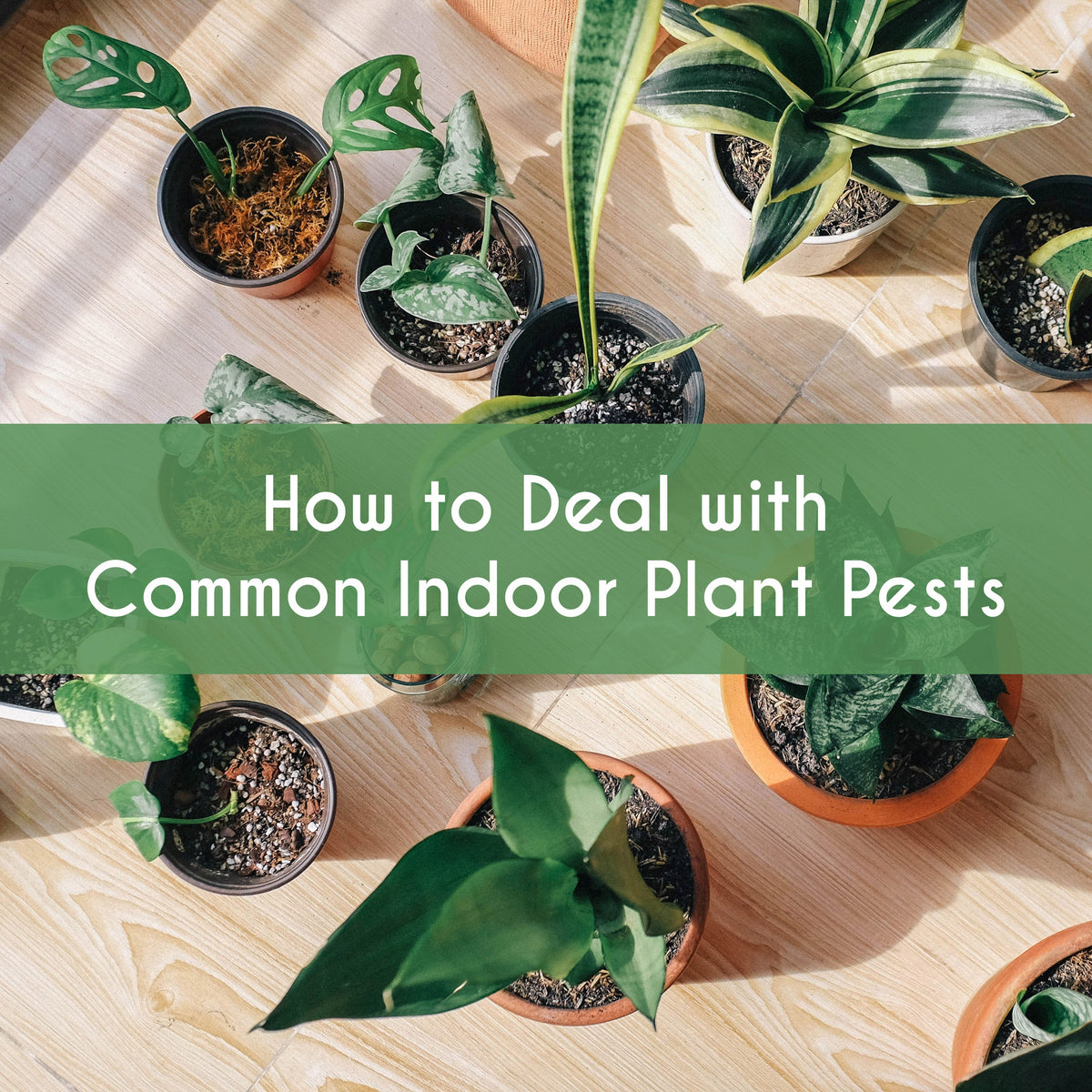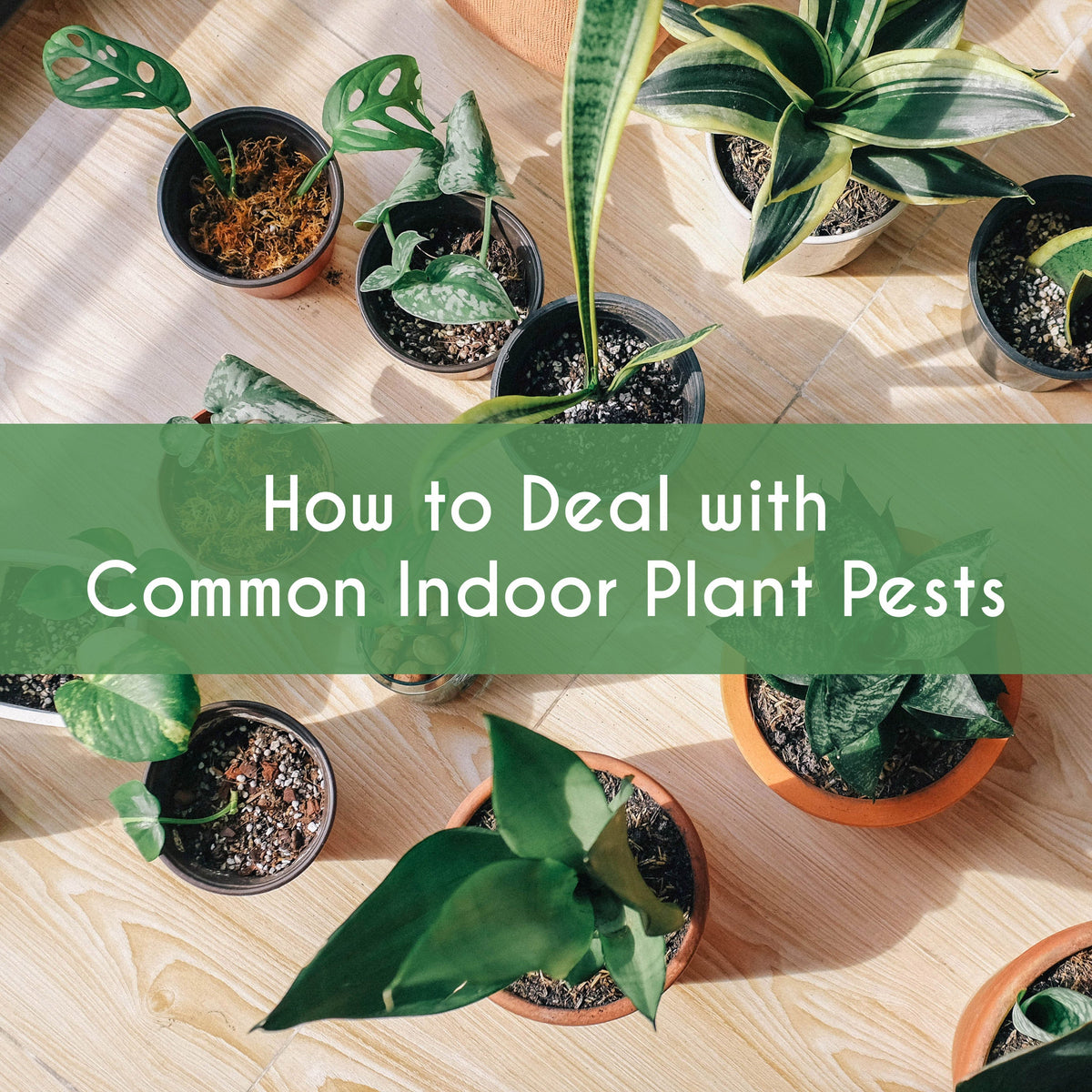The Ultimate Guide to Large Indoor Plant Pests and Solutions delves into the fascinating world of indoor plant pests, offering a comprehensive guide to identifying, controlling, and preventing these unwelcome guests. From the common mealybug to the dreaded spider mite, this guide provides a detailed look at the various types of pests that can invade your indoor plant haven, along with practical solutions for tackling them.
Whether you’re a seasoned plant enthusiast or just starting out, understanding the intricacies of indoor plant pest control is essential for maintaining healthy and thriving plants.
This guide offers a holistic approach to pest management, encompassing both preventative measures and effective treatment methods. It covers a wide range of topics, from the importance of early identification to the various control options available, including chemical treatments, natural remedies, and biological control methods.
We’ll also explore pest-specific solutions, providing tailored strategies for tackling each individual pest.
Introduction: The Ultimate Guide To Large Indoor Plant Pests And Solutions
The presence of pests in indoor plant environments can significantly impact the health and well-being of your beloved plants. These unwelcome visitors can cause damage to leaves, stems, and roots, leading to stunted growth, wilting, and even plant death. Furthermore, the presence of pests can create an unpleasant environment for humans and pets, potentially triggering allergies or other health concerns.
Early identification and treatment are crucial for effectively managing indoor plant pests. Early intervention is key to minimizing damage and preventing infestations from spreading. Identifying the type of pest present is the first step in developing a successful treatment plan.
Types of Indoor Plant Pests
- Aphids: These tiny, soft-bodied insects often cluster on the undersides of leaves, sucking sap and causing leaf curling and discoloration. They can also secrete honeydew, a sticky substance that attracts other pests like ants and sooty mold.
- Mealybugs: Mealybugs are characterized by their white, cottony, or waxy coverings. They feed on plant sap, causing yellowing and wilting. These pests can also produce honeydew, attracting ants and sooty mold.
- Scale Insects: Scale insects are small, armored insects that attach themselves to plant stems and leaves. They are difficult to control due to their protective coverings. Like aphids and mealybugs, they suck sap and secrete honeydew, attracting other pests.
- Spider Mites: These microscopic pests are difficult to see with the naked eye but leave behind fine webbing on plants. They feed on plant sap, causing yellowing, speckling, and leaf drop. They can also be identified by their tiny, red or yellow bodies.
While our guide focuses on indoor plant pests, the principles of healthy plant care apply across the board. Just like large indoor plants need protection from pests, a chamomile lawn needs a healthy environment to thrive. For tips on keeping your chamomile lawn flourishing with minimal effort, check out this helpful guide: How To Keep A Chamomile Lawn Thriving In Low-Maintenance Gardens.
By understanding the fundamentals of plant health, you can effectively combat pests and maintain a beautiful, thriving indoor plant collection, just as you can with a chamomile lawn.
- Fungus Gnats: These small, flying insects are attracted to moist soil and can cause damage to plant roots. Their larvae feed on decaying organic matter in the soil, but they can also damage roots and seedlings.
- Whiteflies: These tiny, white, winged insects often congregate on the undersides of leaves, feeding on plant sap. They can cause yellowing, wilting, and leaf drop. They can also produce honeydew, attracting ants and sooty mold.
Common Indoor Plant Pests
Identifying and understanding the common pests that can infest your indoor plants is crucial for protecting your green companions. Early detection and appropriate treatment are key to preventing significant damage and ensuring the health of your plants. This section will guide you through identifying common indoor plant pests, their characteristics, and the typical symptoms of infestation.
Common Indoor Plant Pests: Identification and Characteristics
Understanding the characteristics of common indoor plant pests is essential for early detection and effective treatment. This table provides a comprehensive overview of some of the most prevalent pests, their identifying features, and the symptoms they cause.
Pest Name |
Identification Characteristics |
Typical Symptoms of Infestation |
Life Cycle |
|---|---|---|---|
Spider Mites |
|
|
|
Mealybugs |
|
|
|
Aphids |
|
|
|
Scale Insects |
|
|
|
Fungus Gnats |
|
|
|
Whiteflies |
|
|
|
Effective Control Methods: Prevention and Treatment

Once you’ve identified the culprits plaguing your indoor plant paradise, it’s time to take action. The most effective approach is a multi-pronged strategy combining preventative measures and targeted treatments. This approach helps minimize the risk of infestations and ensures the long-term health of your beloved greenery.
Preventative Measures
Prevention is the cornerstone of any successful pest management strategy. By taking proactive steps, you can significantly reduce the chances of an infestation ever taking hold.
- Quarantine New Plants:Before introducing a new plant into your collection, isolate it for a couple of weeks. This gives you time to observe for any signs of pests and prevents them from spreading to your existing plants.
- Inspect Regularly:Make a habit of inspecting your plants regularly, paying close attention to the undersides of leaves, stems, and soil. Early detection is crucial for effective control.
- Maintain Cleanliness:Keep your plants and their surroundings clean. Remove any fallen leaves or debris, and wipe down plant surfaces with a damp cloth to remove dust and potential pest hiding places.
- Provide Optimal Growing Conditions:Healthy plants are more resilient to pests. Ensure your plants receive adequate light, water, and nutrients. Stress from poor growing conditions can make plants more susceptible to infestations.
Chemical Treatments
Chemical treatments, including insecticides and miticides, can be effective in controlling pest populations. However, they should be used with caution and only as a last resort, as they can pose risks to humans, pets, and beneficial insects.
- Insecticides:These target insects, often killing them on contact or disrupting their life cycle. They come in various formulations, including sprays, granules, and dusts. Always follow the manufacturer’s instructions carefully, and consider using a targeted insecticide that specifically addresses the pest you’re dealing with.
- Miticides:These are specifically designed to control mites, which can be difficult to eliminate with traditional insecticides. They work by disrupting the mite’s life cycle or killing them directly.
Method |
Pros |
Cons |
Best Practices |
|---|---|---|---|
Chemical Treatments |
Fast and effective in controlling large infestations. |
Can be harmful to humans, pets, and beneficial insects. May leave residues on plants. |
Use only as a last resort. Choose targeted products and follow manufacturer’s instructions carefully. Apply in a well-ventilated area and wear protective gear. |
Natural Remedies
Natural remedies offer a more environmentally friendly approach to pest control. They are generally safer for humans, pets, and beneficial insects, but may require more frequent applications for effectiveness.
- Neem Oil:Extracted from the neem tree, this oil disrupts the insect’s feeding and reproduction cycles. It is effective against a wide range of pests and is considered safe for use on most plants.
- Insecticidal Soap:This soap solution disrupts the insect’s outer layer, causing dehydration and death. It is effective against soft-bodied insects and is generally safe for use on plants.
Method |
Pros |
Cons |
Best Practices |
|---|---|---|---|
Neem Oil |
Safe for humans, pets, and beneficial insects. Effective against a wide range of pests. |
May need to be applied more frequently than chemical treatments. Can leave a sticky residue on plants. |
Dilute neem oil according to manufacturer’s instructions. Apply to both the upper and lower surfaces of leaves. Avoid spraying during hot, sunny weather. |
Insecticidal Soap |
Safe for humans, pets, and beneficial insects. Effective against soft-bodied insects. |
May need to be applied more frequently than chemical treatments. Can be harmful to some plants. |
Dilute insecticidal soap according to manufacturer’s instructions. Apply to both the upper and lower surfaces of leaves. Avoid spraying during hot, sunny weather. |
Biological Control
Biological control involves introducing beneficial insects or organisms to your indoor environment to prey on or parasitize the pests. This method is a natural and sustainable way to manage pest populations.
- Ladybugs:These voracious predators feed on aphids, mealybugs, and other soft-bodied insects.
- Lacewings:Lacewings are effective against aphids, mealybugs, and other small pests.
- Parasitic Wasps:These tiny wasps lay their eggs inside pest larvae, killing them.
Method |
Pros |
Cons |
Best Practices |
|---|---|---|---|
Biological Control |
Natural and sustainable approach to pest management. Safe for humans, pets, and plants. |
May take longer to control pest populations than chemical treatments. Requires careful planning and introduction of beneficial insects. |
Choose beneficial insects that are specific to the pests you are dealing with. Release them in the evening or at night, when they are most active. Provide food and shelter for the beneficial insects. |
Physical Removal
Physical removal methods involve directly removing pests from your plants. This is a simple and effective way to control small infestations.
- Handpicking:This involves manually removing pests from plants. It is effective for small infestations, especially for pests like aphids, mealybugs, and scale insects.
- Sticky Traps:These traps attract and capture flying insects, such as fungus gnats and whiteflies. They are effective for monitoring pest populations and preventing further infestations.
Method |
Pros |
Cons |
Best Practices |
|---|---|---|---|
Physical Removal |
Simple and effective for small infestations. No chemicals or harmful substances involved. |
Time-consuming and may not be effective for large infestations. |
Inspect plants regularly for pests. Remove pests immediately upon detection. Use a vacuum cleaner to remove pests from hard-to-reach areas. |
Maintaining a Healthy Indoor Environment

A healthy indoor environment is crucial for preventing and controlling plant pests. By providing optimal growing conditions, you create an environment that discourages pests and strengthens your plants’ natural defenses.
Creating a Pest-Resistant Environment, The Ultimate Guide to Large Indoor Plant Pests and Solutions
Creating a pest-resistant environment involves implementing several strategies that address the factors that attract pests. These strategies work together to create an environment that is less hospitable to pests and more conducive to healthy plant growth.
Maintaining Optimal Humidity Levels
Maintaining optimal humidity levels is critical for preventing pests like spider mites, mealybugs, and whiteflies. These pests thrive in dry environments, so keeping the air moist can help deter their presence.
- Use a humidifier:A humidifier can add moisture to the air, especially during dry seasons or in areas with low humidity.
- Group plants together:Grouping plants together creates a microclimate with higher humidity levels, which can help deter pests.
- Mist plants regularly:Misting plants with water can temporarily increase humidity levels around them.
Providing Adequate Ventilation
Adequate ventilation is crucial for preventing the buildup of moisture and stagnant air, which can attract pests. Proper airflow helps regulate humidity levels and discourages the growth of mold and mildew, which can weaken plants and make them more susceptible to pests.
While “The Ultimate Guide to Large Indoor Plant Pests and Solutions” covers the threats to your plant’s health, you can also focus on expanding your collection through propagation. For example, learn how to easily multiply your money plant using water by following the simple steps outlined in How To Propagate A Money Plant Using Water.
Once you have a thriving money plant, you can use the guide to keep it healthy and free from pests, ensuring it continues to thrive in your home.
- Open windows and doors:Allow fresh air to circulate through your home, especially in well-ventilated rooms.
- Use fans:Ceiling fans or small desk fans can help circulate air and prevent stagnant pockets.
- Avoid overcrowding:Overcrowding can create stagnant air and hinder airflow, making it more difficult to maintain optimal humidity levels.
Regularly Cleaning Plants and Surrounding Areas
Regularly cleaning plants and surrounding areas removes dust, debris, and pests that may be hiding in the environment. Cleaning also helps improve airflow and light penetration, which are essential for healthy plant growth.
- Wipe down leaves:Use a damp cloth to wipe down leaves and remove dust, debris, and pests.
- Vacuum surrounding areas:Vacuum the floor and furniture around your plants to remove any fallen leaves, debris, or pests.
- Clean pots and trays:Regularly clean pots and trays to prevent the buildup of dirt and debris that can attract pests.
Inspecting New Plants Before Bringing Them Indoors
Before bringing new plants indoors, it is crucial to inspect them thoroughly for any signs of pests. This step helps prevent the introduction of pests into your home, which can quickly spread to other plants.
- Check for visible pests:Look for insects, eggs, webs, or other signs of pest activity.
- Examine leaves and stems:Inspect leaves and stems for any discoloration, holes, or other damage that may indicate pest infestation.
- Isolate new plants:Quarantine new plants for a few weeks before introducing them to your other plants.
Best Practices for Plant Care
Following best practices for plant care can significantly contribute to pest prevention and overall plant health. These practices address the basic needs of plants, creating a more robust environment that discourages pests.
- Provide adequate light:Different plants have different light requirements. Ensure your plants receive the appropriate amount of light for their species.
- Water appropriately:Overwatering and underwatering can stress plants and make them more susceptible to pests. Water plants only when the top inch of soil is dry.
- Use the right potting mix:A well-draining potting mix is essential for healthy root growth and prevents overwatering.
- Fertilize regularly:Fertilizing provides essential nutrients that promote strong growth and help plants resist pests.
- Monitor for signs of pests:Regularly inspect your plants for any signs of pests. Early detection can help prevent infestations from becoming severe.
Final Thoughts

By understanding the intricacies of indoor plant pests and implementing the strategies Artikeld in this guide, you can create a healthy and thriving indoor plant environment. With a proactive approach to pest control, you can ensure your plants remain vibrant and free from the unwanted attention of these tiny invaders.
This guide serves as a valuable resource for plant lovers of all levels, empowering you to become a confident and knowledgeable plant guardian.
Popular Questions
What are the most common indoor plant pests?
Common indoor plant pests include mealybugs, aphids, spider mites, scale insects, and fungus gnats.
How do I prevent indoor plant pests?
Prevention strategies include regularly inspecting plants, quarantining new plants, maintaining proper humidity levels, providing adequate ventilation, and cleaning plants and surrounding areas.
What are the best natural remedies for indoor plant pests?
Effective natural remedies include neem oil, insecticidal soap, and diatomaceous earth.
Can I use chemical treatments for indoor plant pests?
Chemical treatments, such as insecticides and miticides, can be effective but should be used cautiously and with proper safety precautions.
